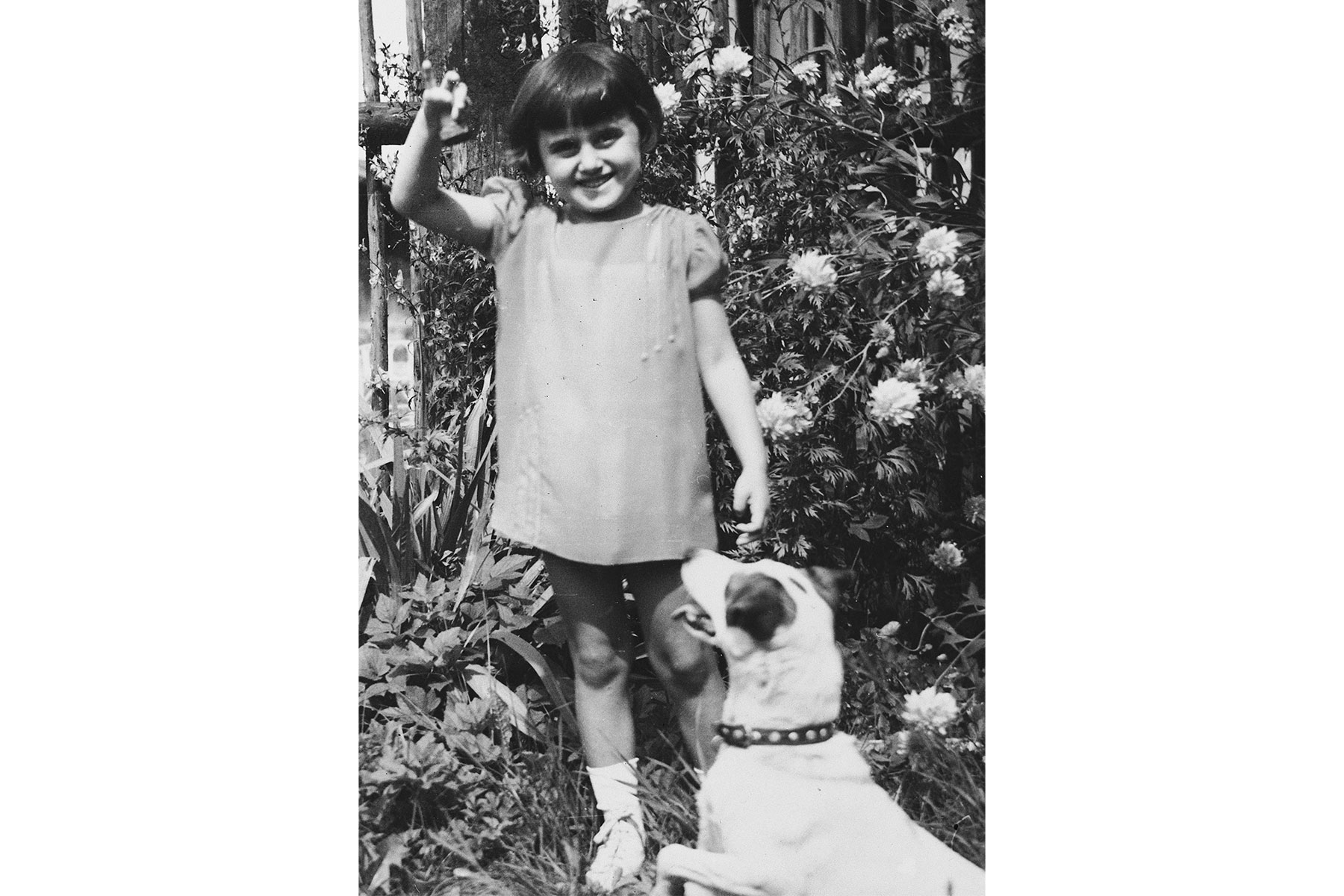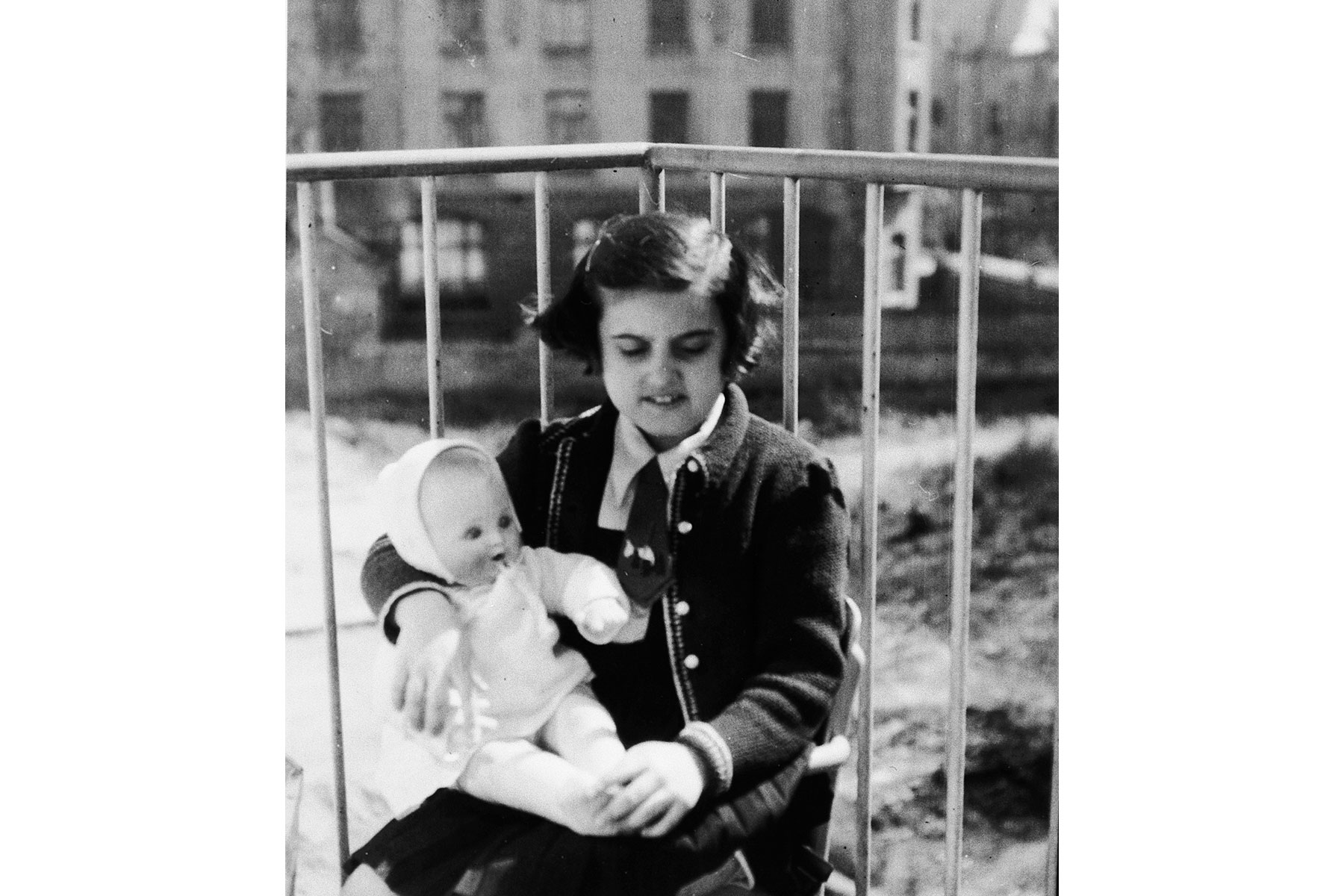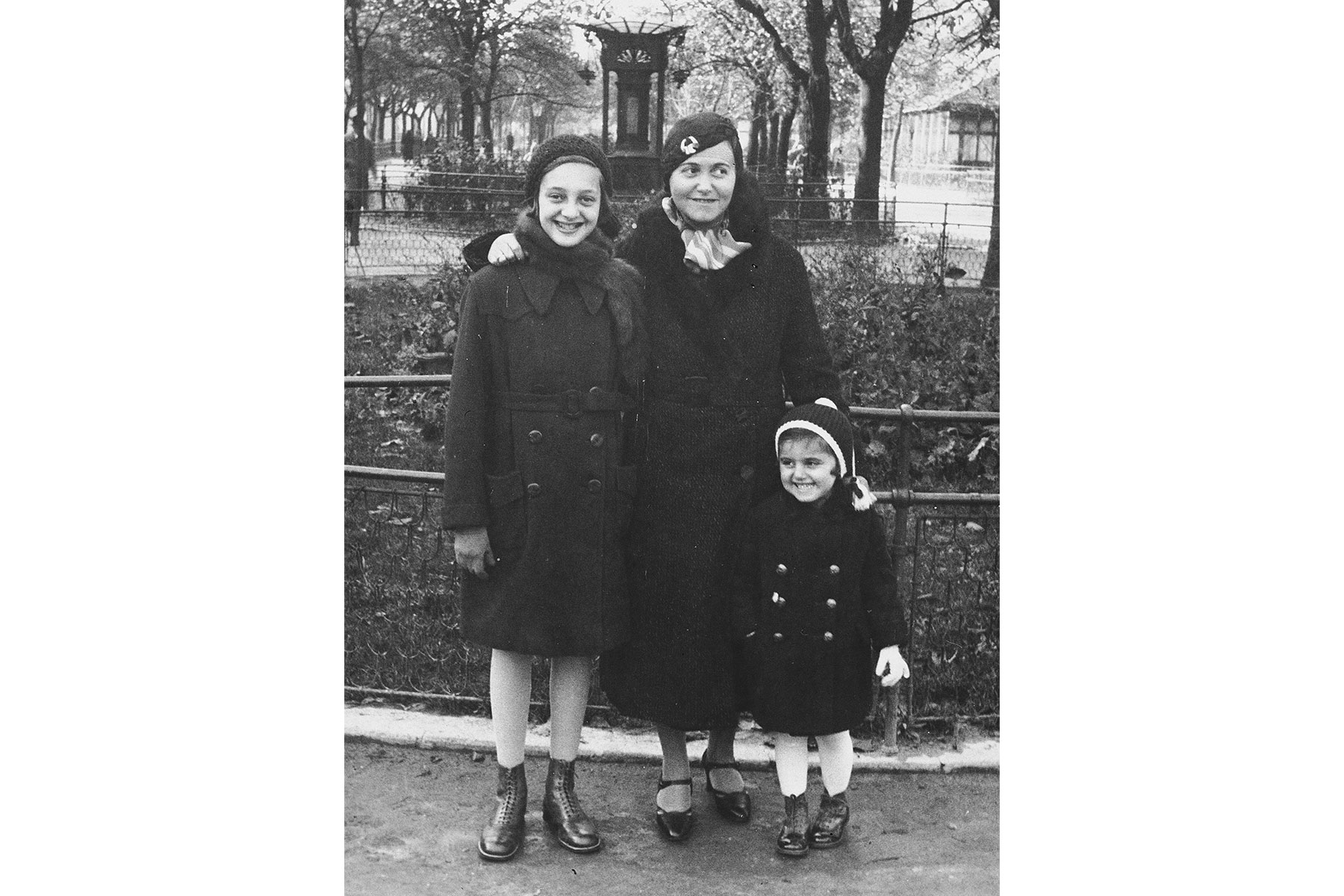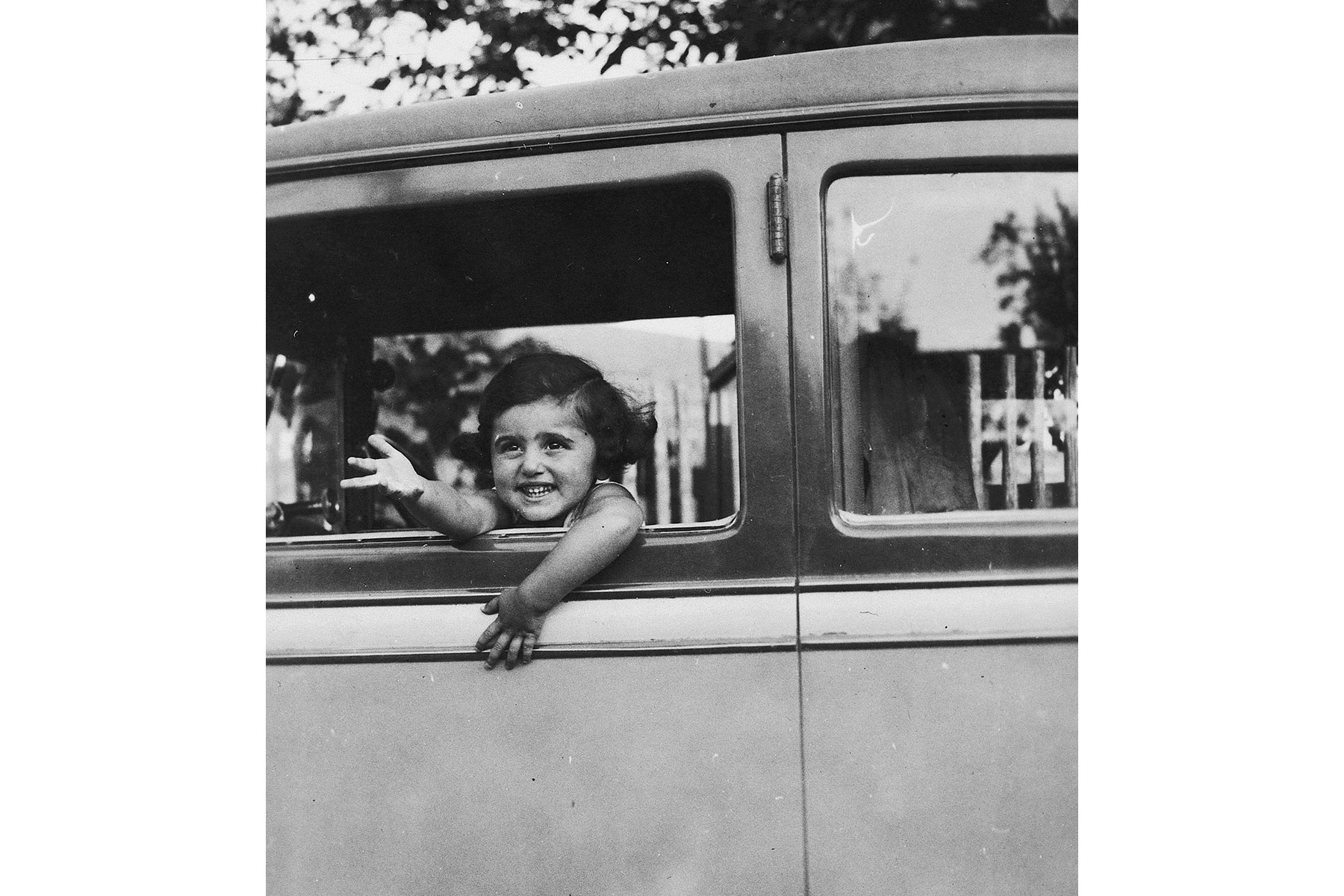One Father Records the Early Years of His Daughter's Life
Holocaust diaries provide first-person accounts that help personalize this dark chapter in history. They run the gamut of human emotions—from fear and suffering to love and hope during unimaginable circumstances. One diary in the Museum’s collection is from Bela Weichherz, a proud father who detailed his daughter’s accomplishments for more than a decade. View selected photos he took to document the life of his daughter, Kitty.

HAPPY BEGINNINGS After the birth of his daughter, Kitty, in 1929 in Bratislava, Slovakia, new father Bela Weichherz started a detailed diary of her life, which he kept until their deportation to a concentration camp. He charted Kitty’s progress, development, and anything he deemed important.
Photo: Kitty plays with a dog in a garden, circa 1933–35. US Holocaust Memorial Museum, gift of Judith Landshut

GIFTED POLYGLOT Kitty had a talent for languages. From a young age, she learned to speak four languages—German, Slovak, Hungarian, and Czech—and attended a local Slovak public school.
Photo: A close-up portrait of Kitty helping her family in the kitchen, circa 1935–37. US Holocaust Memorial Museum, gift of Judith Landshut

A COMPLETE UPHEAVAL In 1938, Germany annexed the Sudetenland, an area of Czechoslovakia that contained an ethnic German majority. Afterwards, anti-Jewish propaganda surged in Slovakia, particularly in cities with a strong German influence like Kitty’s hometown, Bratislava. She was forced to leave her Slovak public school and move to a Jewish school. When Slovakia seceded from Czechoslovakia and became a German ally in March 1939, Bela lost his job as a traveling salesman for the Philips Company. Without an income, the family decided to move to Cadca where Bela’s parents and siblings lived.
Photo: Kitty holds her doll on a balcony in Bratislava, circa 1934–37. US Holocaust Memorial Museum, gift of Judith Landshut

A FAMILY SEPARATED In June 1941, Nazis started arresting Jews from Cadca, and one month later the remaining Jewish men were sent to forced labor—including Kitty’s father. However, Bela was able to secure a work permit and started working for the company Rudolf Vaculik. This opportunity only lasted a short time.
By March 1942, Slovakia started deporting Jews to concentration camps in German-occupied Poland. The last entry from Bela in Kitty’s diary reads, “I only wish that we can go together. Esti [his wife] is feeling weak and afraid and she won't be able to support herself. Kitty is strong for her age but one would like to help a child in a situation like this.”
Photo: Kitty poses in a park with her mother Esti (center) and older cousin Klari Neumann, circa 1933–35. US Holocaust Memorial Museum, gift of Judith Landshut

REMEMBERING LIVES LOST Kitty and her immediate family were all killed during the Holocaust.
Bela’s two diaries, which included these photos, were hidden during World War II and later, someone uncovered them and returned them to Bela’s sister. These family mementos were passed down within the family before being donated to the Museum.
Photo: Kitty leans out the window of a vehicle, circa 1933–35. US Holocaust Memorial Museum, gift of Judith Landshut
TWO DIFFERENT FATES
WATCH